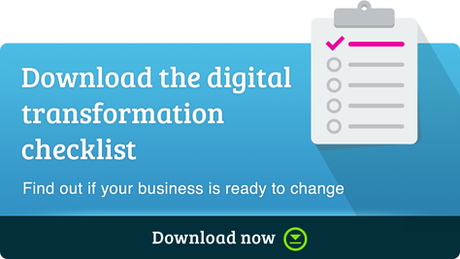Forrester‘s new report, ‘The Future of Business is Digital’ highlights the need for a holistic approach to digital transformation, advising that a ‘piecemeal’ approach is no longer sufficient.
This report has got us thinking – we’ve long believed that digital works best when integrated into core activities, rather being perceived as a ‘bolt on’.
Digital as a concept is at risk of becoming siloed, but it’s much more than that. In an ideal world, the future of business will merely be business with digital folded in. Is there scope for a world where digital is assumed? We’d like to think so.In this blog, we’re taking a look at why your business needs to become digital, rather than ‘do’ digital, and what this practically means.

Why You Need to Become Digital
There’s one key reason that businesses of all industries must embrace digital – the sea change in consumer behaviour, a change we like to characterise as the ‘connected customer.’
The sophistication and availability of digital technologies and social media has created a new type of modern customer – one who has more technology in their hands than ever before, with the range of smartphones, tablets and mobile devices constantly evolving and progressing.
The connected customer can now research and review your products and services online long before making contact with you, and without the aid of your sales team.
This marks a crucial power shift in favour of customers - one that is evident irrespective of industry.
A recent report by eMarketer has revealed the time UK consumers spend with laptops, tablets and mobile phones is set to overtake the time spent viewing TV in 2014 for the first time ever, demonstrating the imperative for businesses to communicate with customers via digital channels.
What Does It Mean to Become Digital?
The co-writer of Forrester’s report, Nigel Fenwick, says:
“The piecemeal strategy of bolting digital channels or methods onto the business is no longer sufficient. You must think of your company as part of a dynamic ecosystem of value that connects digital resources inside and outside the company to create value for customers.
"To do this, you must fully harness digital technologies, both to deliver a superior customer experience and to drive the agility and operational efficiency you need to stay competitive.”
Harnessing digital technology and taking a holistic approach is crucial but we also agree with Brian Solis on the role of technology in digital transformation:
“Digital transformation is not just about technology; it’s about vision and how businesses are transforming from the inside out using technology as an enabler for a more integrated customer and employee experience.”
Both of these quotes highlight two main things; becoming digital involves embedding digital technologies at all levels and functions of your business, and that the goal must always be to improve and exceed the experience of the end users.
What Does Digital Transformation Actually Involve?
If you’re considering digital transformation, there are a number of components you should be prepared to examine:
- Customers, marketing, sales and content.
- Technology, infrastructure, IT, data.
- Analytics, monitoring, benchmarking.
- Process, management, efficiencies.
- Finance, legal, compliance.
- People, HR, culture.
If you'd like more practical information on what to expect from a digital transformation, click here.
Digital Transformation Matters, Size Doesn’t
Digital transformation is reaching critical significance for businesses of all types and sizes and while we believe that a holistic approach is key, there’s no reason that it should be viewed as an all-encompassing programme of change, achievable only for large companies with in-house teams.
All large projects need to be broken down into manageable steps, and digital transformation is no exception. Breaking digital transformation down into manageable projects allows you to keep control of timescale, costs and goals. We’ve started a new blog series to help you identify how to break this work down into steps. Read the first part here.

Ready to Become Digital?
With consumer technology and consequently behavior continuing to evolve, it’s become abundantly clear that adding digital elements to your existing business processes doesn’t go far enough. The experience of your customers has got to be at the heart of what you do, and even if it already is, the way you maximise your customer experience has changed.
It’s time to become digital, not just ‘do’ digital.
If you’re ready to start the process, download our digital transformation checklist and start today.


